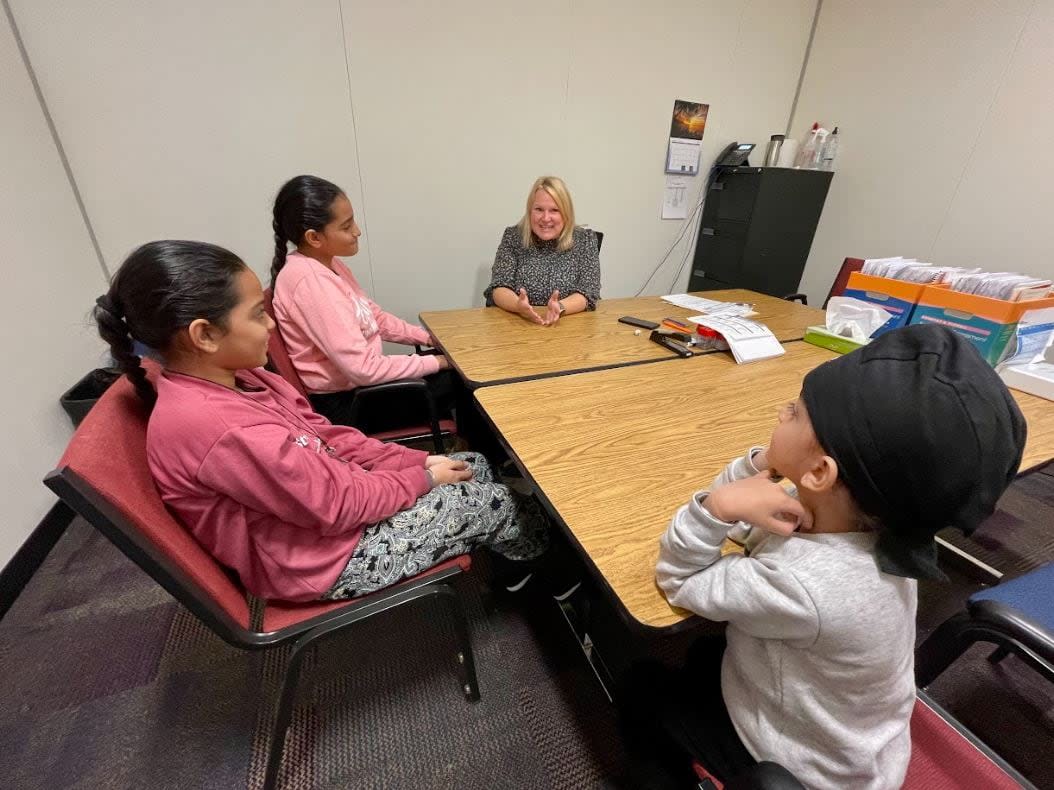Regina, Saskatoon school divisions see immigration-fueled enrolment spike

Immigration is boosting enrolment numbers across four of Saskatchewan's urban school divisions, and it continues to drive up the need for more English as an additional language supports, educators say.
Regina Public Schools says its enrolment was 26,259 as of the end of September — 864 more students than September 2022.
The Regina public division said its Newcomer Welcome Centre — which assesses students new to Canada on their reading, writing and math skills — has already registered more than 900 students so far this fall. That's more than half of the 1,600 students it helped over the previous school year.
Gisele Carlson, Regina Public Schools' English as an additional language co-ordinator, said those are the highest numbers the centre has seen in the last decade.
Regina Catholic Schools is also seeing a bump in students this year. It had 13,270 students as of Sept. 30 — 916 more than the year before.
A spokesperson said the division doesn't have a breakdown of newcomer students at this point, but said anecdotally, "the number is unusually high."
To keep up with demand and avoid a backlog in Regina Public Schools, Carlson said her team has had to occasionally pull EAL teachers from schools to help with assessments.
"The assessment is important to give the teachers some information about the student before they come so that they know what kinds of supports might be necessary," Carlson said.
"The whole process is really to support families and help them understand, so they can make the best decisions for their children."

Gurpreet Kaur and her husband moved their family to Regina from New Delhi last month. A week later, their two oldest children had assessments done at Regina Public Schools' Newcomer Welcome Centre. (Jessie Anton/CBC)
Gurpreet Kaur says two of her children have benefited from getting an assessment after moving here recently from India.
She and her husband, along with their three children, came to Regina from New Delhi last month. About a week later — after co-ordinating with the Regina Open Door Society, which the centre also works with — their two eldest kids got in for an assessment, and were also able to get some questions answered about everyday life in Saskatchewan.
"They gave me the knowledge of everything so I can do this," Kaur said with a smile.
Saskatoon's schools are also seeing enrolment increases this year. Saskatoon Public Schools had 28,256 students as of Sept. 30 — an increase of 1,078 over September 2022. Saskatoon Greater Catholic Schools had 22,089 students, up 1,590 from last year.
Saskatoon Public said its Newcomer Student Centre has already assessed 732 students so far this school year.
LISTEN | Saskatoon Public Schools' superintendents weigh in on influx of students:
The Saskatoon Catholic division said its Newcomer Welcome Centre has assessed 551 students this year.
"Families new to Canada continue to be a significant factor in overall growth, accounting for 1,495 students," the division said early last month in news release.
Carlson said Regina Public has at least one EAL teacher in all of its eight high schools, but only 15 across its 44 elementary schools. She'd like to see at least five more hired.
"A few years ago, during COVID, we felt pretty confident that we had a good amount of support. But since then, we've had huge increases [in newcomer enrolment] and we haven't been able to increase the EAL support, so that then falls on classroom teachers," Carlson said.
"I'm confident that teachers are doing the best they can. But a student who needs English support may be struggling a little bit, having to maybe do more homework at home, more work on their own or maybe asking their friends for help."

Gisele Carlson, Regina Public Schools' English as an additional language co-ordinator, said the division’s Newcomer Welcome Centre is seeing its highest student numbers since it began collecting data 10 years ago. (Jessie Anton/CBC)
The Saskatchewan Teachers' Federation said it's been hearing about similar situations from school divisions across the province.
Union president Samantha Becotte said the latest government data shared with the federation from 2021 showed there was roughly one English as an additional language teacher per 140 EAL students.
However, she noted that the ratio is likely more dramatic today.
"It means fewer supports for classroom teachers supporting English as an additional language students and less time for those students to get those supports that they need," Becotte said.
The federation's latest bargaining proposal to the province includes an ask for more money to hire more EAL teachers, she said.
In an emailed statement, the Ministry of Education said it's still reviewing and verifying the enrolment data it was provided with from school divisions at the end of September.
The ministry also pointed to the $40-million funding boost it gave divisions last June, which it said was "to support enrolment growth and the complexity of today's classrooms."


